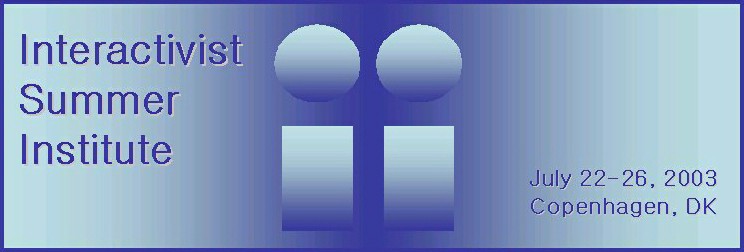
Interactivist Summer Institute
July 22 - 26, 2003
Copenhagen
Title: Three Modes of Anticipation: Complex Interface Relations
Author: Edwina Taborsky
Bishop's University and University of Toronto
Lennoxville, Quebec, Canada J1M 1Z7
Email: taborsky@primus.ca
etaborsk@ubishops.ca
Web site: http://www.library.utoronto.ca/see
(site of on-line SEE : semiosis/evolution/energy research programme and SEED journal)
This paper is focused around my research in Semiotic Realism, which refers to natural processes of measurement of energy/mass relations found within all realms of our universe, the abiotic, biotic and conceptual. Our universe is composed of energy and mass; the one is a version of the other, and their dynamic transformation is due to the establishment of an evolving network of linked measurements or codifications of mass/energy.
These dynamic transformations of matter operate by means of establishing measured or codified relations of gradients of energy/matter. A sign is to be understood, whether in its nature as an atom, a cell or a concept, as a process of measurement of radiant energy to materialized mass; it is 'informed' because it has been codified/measured such that it enters into measured relations with other energy/matter. The measurement infrastructure for this dynamic process is made up of four spatial dimensions and three temporal dimensions. These result in six predicate relations, which are understood as the complex actions that measure energy such that it is stabilized as 'informed mass'.
Not all six predicates may be operative in these transformations, but a major predicate relation is that of the Interface, which operates at borderline sites and phases. This relation is an interaction which is anticipatory and 'outward-seeking' rather than reactive. A robust interface must set up a 'basin of attraction' where different gradients become 'interested' and co-involved and co-operative, sharing and negotiating different measurements. I posit three different types of attractors, which each operate within different spatial and temporal parameters, with different results. The paper explores the different natures of these three interface attractors and the functional results of their operations.
Edwina Taborsky
39 Jarvis St. #318
Toronto, Ontario M5E 1Z5
(416) 361.0898
